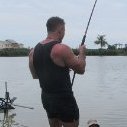-
Recently Browsing 0 members
- No registered users viewing this page.
-
Topics
-
Popular Contributors
-
Latest posts...
-
125
Transfer of 800K using Wise for 1 Year Extension Visa
Agreed. While you should be able to work out Barclays' charges as the SWIFT initiator and also those of the ultimate recipient Thai bank, it is likely Barclays will route the transfer through a third agency bank at the Thai end. And by how much this third bank will add to the charges is anyone's guess in my experience. -
16
Crime Drunken Foreign Tourists Assault Thai Woman, Locals Step In with Brutal Response
You love that dont you. Gives you a chance to put on your boots and runes -
268
Finance Foreign Nationals Face Account Bans in Bangkok Bank Crackdown
So you think that, effectively, this is a way to cut off retirement extensions using non-O in Thailand, because of health insurance? I hadn't thought of that. If so, then this policy certainly will spread to other banks. -
268
Finance Foreign Nationals Face Account Bans in Bangkok Bank Crackdown
One of the requirements mentioned is to be married to a Thai citizen, I believe however that one must still be resident in Thailand, or for married people do they also open the account with a tourist visa? -
36
More Trump Socialism
They'll have to remove themselves from office if they are truly fighting fraud. -
32
Weathering the Climate Debate: Meet the Young Meteorologist Challenging the Hysteria
I do not describe myself as an expert and have not shared my position on that matter. I am not "proving him wrong". Rather, I am pointing out that he has neither the full education, nor field experience that a qualified meteorologist has. You like him because the narrative supports your own personal bias. Who would you rather see for prostate cancer, an experienced urologist with years of treating the disease, or a person freshly graduated out of medical school, without any clinical experience and without advanced training in the subject? Using your logic, because they are both doctors, you would receive equivalent care from either one of them.
-
-
Popular in The Pub
-










.thumb.jpg.82631abb512ae61a745d964452c5b1b9.jpg)

Recommended Posts
Create an account or sign in to comment
You need to be a member in order to leave a comment
Create an account
Sign up for a new account in our community. It's easy!
Register a new accountSign in
Already have an account? Sign in here.
Sign In Now